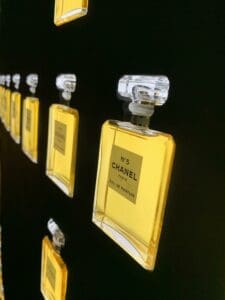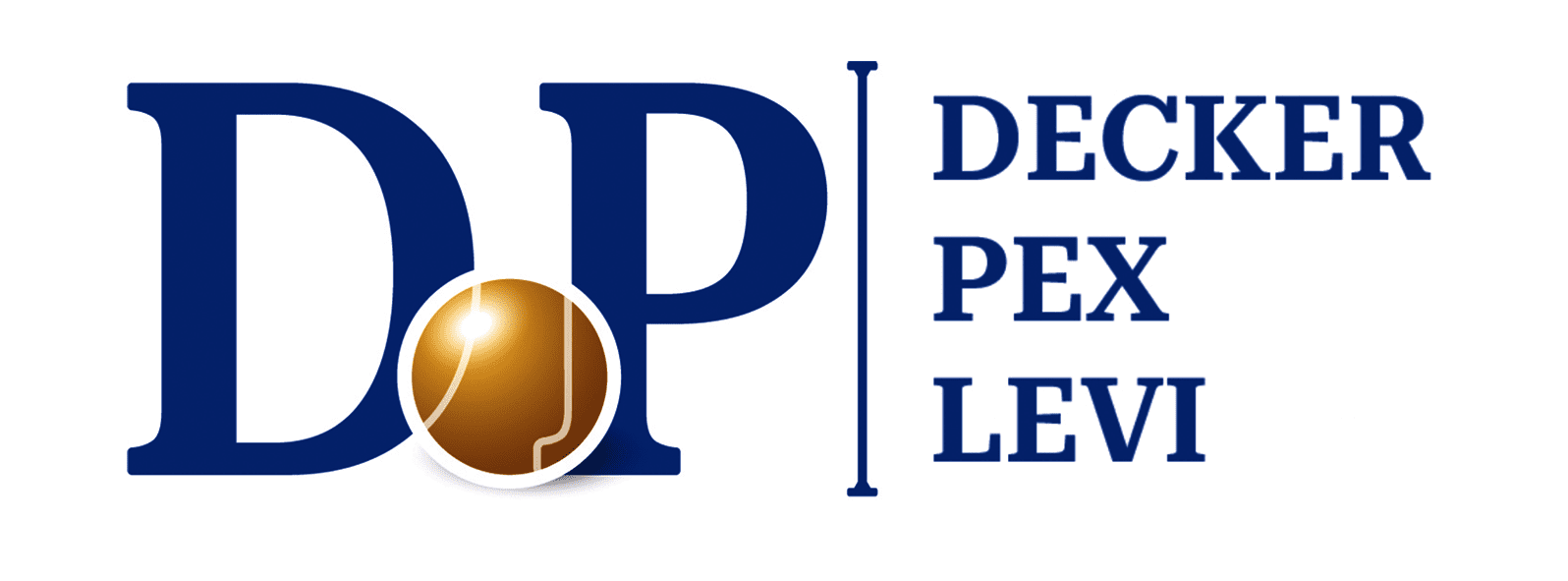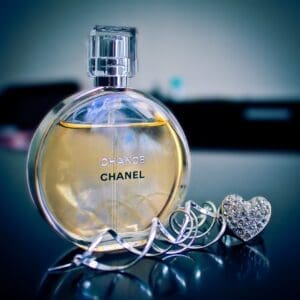Judging a bottle by its cover – Perfume, reputation, and Israeli IP law
Israel’s Intellectual Property Law has a number of unique properties, some stemming from the way judges tend to rely on Biblical and Talmudic precedent when interpreting 21st century legal issues. In this article, an IP lawyer will provide a summary of an Israeli IP suit, centered around the contents and labeling of a container, as an example of high profile intellectual property case demonstrating these issues.
Factual Background
The appellant, Chanel, has a well-known trademark in the perfume market. The respondent, St. Wish Ltd., purchases bottles of luxury perfumes, including Chanel’s, and transfers their contents to smaller bottles. These bottles are then resold with the name of the original perfume and the name of the manufacturer, at a lower price than the original bottle.
Chanel filed a claim of trademark infringement against the respondent. Chanel contended that, despite indications on the respondents labelling that the respondent was not commercially affiliated with Chanel, there was still a concern that the consumer would mistakenly think that the perfume in the bottles was packaged or approved by Chanel. Additionally, Chanel alleged that the respondents relatively plain, grey and nondescript bottle design, would harm Chanel’s brand image.
Finally, Chanel contended that the respondent’s rebottling process caused chemical changes to the perfume and produced substances that were harmful to users’ health. Chanel produced expert witness testimony supporting the conclusion that the rebottled perfume’s chemical composition was significantly altered, and that it contained hazardous substances not found in the original perfume. The respondent provided expert witness testimony that there was no difference between the two perfumes.
 District Court Decision
District Court Decision
Doctrine of True Use
The district court found that the respondent’s use of Chanel’s did infringe on Chanel’s registered trademark. However, the respondent’s use of the trademark may nevertheless be permitted. Israeli trademark law recognizes a doctrine of “true use,” analogous to the trademark doctrine of “fair use” found in many countries’ legal systems.
Descriptive true use allows other parties to use a registered trademark when the mark consists of words that describe the product. For example, the owner of the trademark “SweeTART” may not preclude other companies from describing their products as “sweet-tart,” as these words are being used in their conventional, descriptive context.
This doctrine is a defense against trademark infringement that allows a party to use another company’s trademark when the trademark describes the quality or nature of the goods in question.
This is in contrast to “nominative” true use, which allows other parties to use non-descriptive trademarks to describe the origin of a given product. For example, a soda manufacturer would be permitted to use the trademark “Pepsi” in its advertisements to compare its own cola to cola produced by PepsiCo.
Chanel argued that Israeli law did not allow for nominative true use. Accordingly, the respondent’s use of “Chanel,” a non-descriptive name, could not qualify for the fair use exception. The district court held that this contention was not supported by the case law. Israeli law does, in fact, also recognize “nominative” true use: allowing the use of a non-descriptive trademark when the trademark indicates the source of the goods in question.
Requirements for True Use
The doctrine of true use does not provide blanket approval for the use of registered trademarks. Rather, courts seek to balance (a) the private interest of trademark owners in protecting the reputation and exclusivity of their name, and (b) the public interests of free market competition and accessibility of information regarding products’ commercial origins. To this end, Israeli courts use the following factors in determining whether permissible true use exists:
- Whether the consumer may be deceived or misled to believe that there is a commercial connection between the owner of the trademark and the party using it
- Whether the use of the trademark is “necessary,” i.e., whether there is enough of a connection between the product and the trademark to justify the use, and
- Whether the use is reasonable and fair
Applying the Three-Factor Test
Regarding the possibility of deception, the district court accepted some of Chanel’s assertions, holding that the labelling on the respondent’s products did not sufficiently clarify that the vials were filled by the respondent and that there was no commercial affiliation between it and Chanel. The court also outlined the necessary corrections that the respondent would have to make to its labelling in order to minimize possible confusion and comply with true use.
- The district court determined that it was necessary for the respondent to specify Chanel’s name in order to properly inform consumers regarding the contents of the vials.
- This finding was supported by the fact that the respondent only used the name of Chanel’s perfume, without using Chanel’s logo or the visual design of its trademark.
- The district court concluded that the respondent’s use of the trademark was fair and reasonable, without stating what considerations went in to making this conclusion.
- The district court thus determined that the respondent’s use of Chanel’s trademark was protected by the true use defense, provided that it made the prescribed changes to its labelling.
III. Supreme Court Decision
Changing the Characteristics of the Product
Chanel appealed the district court’s decision to the Supreme Court, focusing on allegations in Chanel’s claim that the district court did not consider. Firstly, Chanel contended that the respondent’s rebottling of the perfume exposed the contents to oxygen which was detrimental to the perfume’s quality. Secondly, Chanel contended that the simple and generic vials into which the respondent repackaged the perfume would harm the prestige of Chanel’s brand. Both of these indicate that Chanel might have suffered damage to its reputation due to the respondent’s use of its trademark.
Fairness Requirement
The Supreme Court acknowledged that these allegations, if true, may raise a concern regarding the fairness requirement of the true use test. Israeli case law has yet to concretely define the fairness requirement. The Court noted that the central function trademarks is to assist the consumer to associate a particular manufacturer with the product indicated by the trademark. One might therefore conclude that the defining characteristic of fairness is whether the use of the mark accurately preserves this association. Accordingly, a use would only be unfair if it deceived consumers regarding the commercial origin of the product.
However, the product-trademark association in fact creates a two-way effect. First, it helps the consumer identify the origin of the product, and second, it protects the economic value of the trademark for its owner, who is entitled to the unique use of and profit from the reputation embodied by the mark. The purpose of a trademark may therefore be subverted if either of these outcomes is undermined. Accordingly, the Court concluded that use of a trademark may be unfair, even absent deception, as long as it harms the brand’s reputation and in turn damages the economic value of the trademark.
Comparative Law Analysis
United States Law
In 1924, the United States Supreme Court decided a case that also involved rebottling and resale of perfumes using the manufacturer’s trademark to indicate the perfume’s origin. Prestonettes, Inc. v. Coty. The Court ruled that the use of the manufacturer’s trademark is permissible, provided that the labelling adequately indicates that the perfume was rebottled by the seller. The Prestonettes decision still holds sway, but courts have qualified it over the years to clarify that care must be taken to prevent consumer deception. Moreover, courts have clarified that protection will not be granted when there has been a material change in the product’s features, or if the trademark owner shows that it takes significant quality control actions which the redistributor does not. Jewish Law
Jewish Law
Trademark Protection
Jewish property law, as a rule, deals exclusively with tangible, physical objects. For this reason, Jewish legal arbiters of the past several centuries who sought to adjudicate trademark issues have done so using other, well-established causes of action in Jewish law, such as unjust enrichment and unfair business practices.
Case Law Precedent
The Court cited two 19th century cases in which Jewish courts essentially upheld trademark protections. The first involved a well-known cotton seller in Turkey, who marked his goods with a distinctive insignia. The second involved a soft-drink merchant in Poland, who had received a license to market his beverages with the designation of “Warsaw Medical Council House.” Both plaintiffs alleged that another merchant was selling different goods bearing their respective distinctive marks. Notably, the damage alleged by both plaintiffs alleged was not loss of sales, but rather harm to the reputation of the brand due to its association with the other merchandise.
In the first case, the court ruled that the right to use the insignia belonged exclusively to the original merchant, and that any other merchant who used it was transgressing the prohibition of “boundary encroachment,” the tort of unfair business competition. In the second case, the court held that it could not prohibit the competing merchant from using the mark, but that it could compel him to publicize that his products are not associated with the original merchant.
Alternative Approaches
The classic Jewish legal source for the prohibition of “boundary encroachment” (unfair business competition) is the statement of the Talmud in Bava Basra (21b) that one may not set up a fishing net too close to another person’s fishing net. Because the first fisherman already chose an optimum location and baited the water, fish are highly likely to approach his net, and therefore the second fisherman is unduly benefiting from the efforts of the first. This principle has since been commonly invoked to prohibit new businesses from opening too close to existing ones. Similarly, it may be argued, a competing merchant who capitalizes on a trademark owner’s heard-earned reputation is unjustly benefiting from the trademark owner’s labor.
Another approach for trademark enforcement utilizes the Jewish legal principle of “the law of the kingdom is the law.” This precept provides that local state laws are generally binding with the force of Jewish law.
A final, more creative approach, comes via the prohibition of “theft of mind.” Traditionally, this prohibition refers to a situation wherein a person is deceived into believing that the offender has done a favor for him, when in reality he has not. By stretching the boundaries of this traditional definition, one may understand that the victim of this offense is not only the deceived party, but also any third party who had the privilege of benefiting from the misconstrued information. Accordingly, when a merchant misuses another’s trademark to deceive a customer about the origin of a product, a theft of mind has occurred, of which both the customer and trademark owner are victims.
Conclusion
In light of the above discussion, the Court concludes that there is sufficient precedent in Jewish law to recognize trademark protections. The Court now returns to the facts of the present case.
Application
The Court first addressed Chanel’s claim that the respondent’s use of gray, nondescript bottles would harm the brand’s “luxurious” image. As previously established, harm to the trademark owner’s reputation may indeed negate the protection of true use. However, in order to prevail on a such a claim, the trademark owner must show demonstrable evidence of economic harm. Although Chanel provided images of the respondent’s packaging, this alone is not concrete proof of damage to Chanel’s reputation. The Court determined that Chanel failed to meet its evidentiary burden for this claim, and it is therefore dismissed.
The Court then addressed Chanel’s claim that the respondent’s rebottling process alters the chemical composition of the perfume. Chanel did provide evidence to this effect, but it was not sufficiently reviewed by the district court. If the rebottling process does result in noticeable changes to the perfume, it would sufficiently distort the trademark-product connection and negate the respondent’s true use protection. The Court concluded that if Chanel is able to prove this claim, it will completely preclude the respondent from using the Chanel trademark.
Holding
The case is remanded to the district court for a trial on the facts regarding the possibility of changes to the perfume’s properties as a result of the bottling process.
Our thanks to Jerome Tkach for his help in writing this article.
Contact us for help:
In the case summarized above, a major international company initially failed to prevail due to lack of understanding of Israeli IP law, and the eventual conclusion of the case relied heavily on Talmudic precedent. These are the reasons you need to consult an Israel Intellectual Property lawyer whenever submitting an IP-related suit to Israeli courts. Contact us to schedule a meeting at:
מאמרים מומלצים

 District Court Decision
District Court Decision

